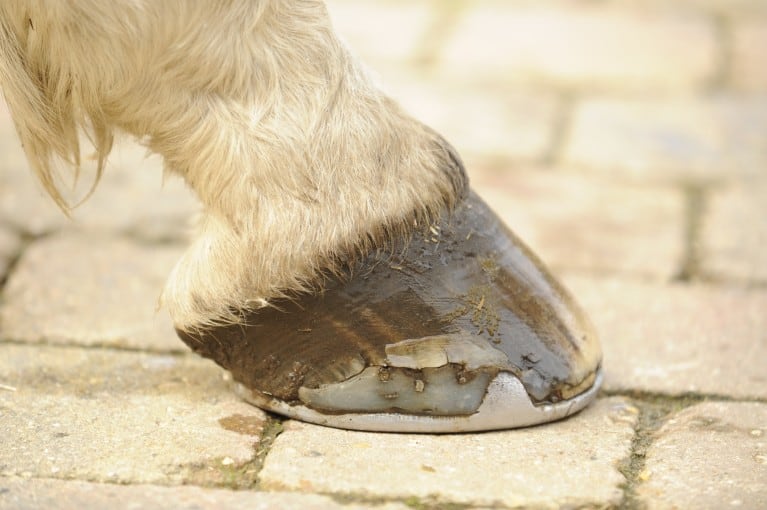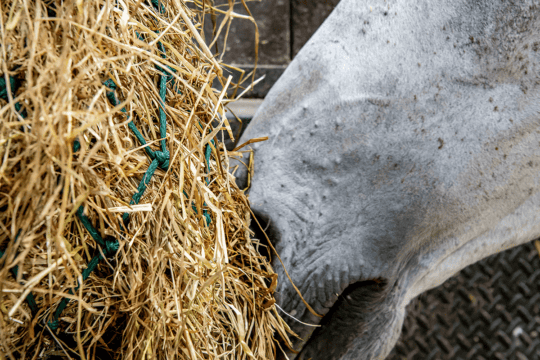My horse’s hooves break up and crack as I turn her out in the day and bring her in at night, what can I do to help her?
Posted in Health and Veterinary
Q: My mare’s hooves tend to crack and break up at this time of year. She is turned out on good grass during the day and comes in at night. She has a well-balanced diet and I have just started her on a feed supplement for hooves. She sees a farrier regularly and I moisturise her hooves every day. What else can I be doing to help her?

Rosie Fell answers:
Hooves tend to be thrown into a state of confusion at this time of year. Being turned out from a dry stable onto morning dew can saturate hooves, making the internal structures swell and expand to accommodate the influx of excess moisture.
As the day goes on and the temperature warms up, this excess moisture evaporates through the hoof wall quickly, making the internal structures shrink and contract. The structures don’t fit back together quite right when this happens, leaving cracks and gaps in the hooves that are a breeding ground for bacteria, and eventually can result in infections and abscesses due to weaker hoof horn.
This is also the case in times of sudden downpour after, or followed by, sunshine. If you cannot turn out later to avoid morning dew or be available to bring the horse in during downpours, you can protect the hooves with a breathable waterproof hoof gel to prevent this kind of water damage – and this will enable you to turn out with confidence.
Food for feet
It’s great that you are feeding a supplement for hooves, as this gives your horse the best chance of growing good strong feet. But remember that anything you feed your horse to improve the hooves will not give your results for at least four to six months. So persevere with the supplement and if you see no real improvement after six months, don’t be afraid to swap brands.
Also, try not to over-moisturise the hooves. Hard hooves are better – since their origins of time, horses were created with naturally very hard hooves for this reason. They are more capable at dealing with day-to-day demands and different terrains. Hooves that are over-moisturised will look very satiny, but this is merely cosmetic.
After a while, the over-moisturised hoof may have too much flex and bend, and this can be detrimental to internal structures, much like our own nails which bend and break when too soft. Most dehydrated hooves will improve with just two or three applications of moisturiser per week. A good hardener will contain a hardening agent to restore natural effectiveness of the hoof – therefore preventing cracks and breaks – and a flexibility agent to encourage the right amount of suppleness and flexibility.















